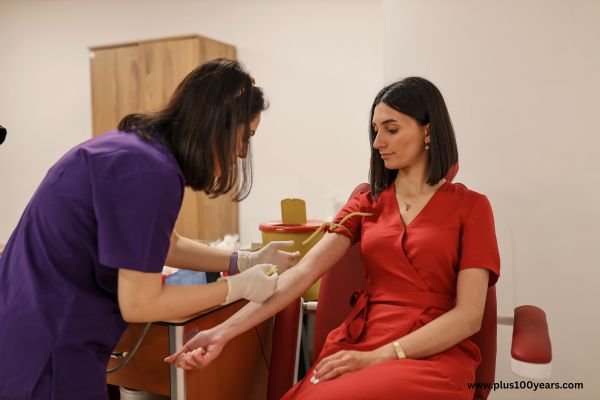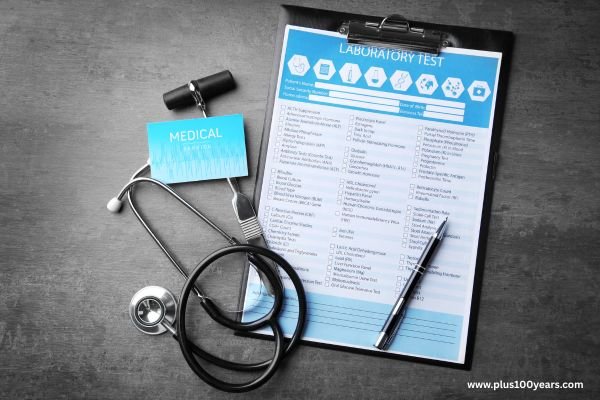Updated: 25-08-2025; Author : David Bauder, Owner & PA-C Weight Loss and Vitality www.weightlossandvitality.com
It has long been known that medical preventive strategies can lead to decreased risk of certain diseases and potentially decrease the need for expensive interventions later in life.
Understanding the Return on Investment with Different Health Programs
Three common applications and preventive strategies that are seen every day in medical clinics are blood pressure, cholesterol, and blood glucose control.
Control protocols work to decrease the risk of cardiovascular disease and the risk of heart attack and stroke.

But what about more non-standard medical approaches commonly practised in integrative medical clinics, such as formal weight loss programs, bio-identical hormone replacement in women, and testosterone replacement in men? In the discussion below, we are going to take a deeper dive into the financial impacts of these three programs.
Medical Weight Loss: Upfront Cost vs. the Potential Savings
There are many hidden costs associated with obesity, as obesity can cause a wide array of complications 1,2, 3. These include conditions such as:
✅ Heart disease
✅ Stroke
✅ Cancer
✅ Osteoarthritis
✅ Sleep apnea
The medical care and treatment associated with these conditions can add up, putting an immense financial burden on the patient and the health care system.
Medical weight loss programs are available and popular as individuals aim to manage their obesity and improve their overall health.
Programs may seem expensive at first; however, they can offer long-term savings that often outweigh the upfront investment.
Program Costs
Weight loss program costs generally fall into three specific areas:
1. Initial Evaluation: generally includes blood work and consultation; costs between $200–$500 in most programs.
2. Monthly Program Fee: follow-up visits, biometrics, modifications, and consultations; $150–$500.
3. Medication: may or may not be included in the program fee. If medication is not included, it can cost $300–$1,200 per month, largely dependent on the type of medication and insurance coverage.
Some of our patients are fortunate enough to have zero co-pay on Zepbound or Wegovy. This seems to be the exception rather than the norm.
Average annual cost: a program can run $5,000–$19,000 per year. Higher costs are associated with the active weight loss phase, requiring higher medication doses; lower costs occur during the maintenance phase with reduced dosing.
At our clinic, Weight Loss and Vitality, the average patient spends about $7,145 maximum per year for the weight reduction phase and about $1,404 per year for the maintenance phase, which is a substantial cost savings.
The length of time a patient is on the weight reduction phase is directly correlated to the amount of weight reduction required, along with tolerance of medication, eating and exercise habits and underlying medical conditions.

Upon viewing the cost associated with these programs, it can seem expensive, keeping in mind the cost in the context of potential long-term health savings.
Savings and Benefits
Savings and benefits really have measurable monetary value and immeasurable results.
✅ Measurable results: the amount saved and visible in your bank account.
✅ Immeasurable results: quality of life improvements, such as being able to take a bike ride with your grandchildren.
For this article, we will focus mostly on the measurable financial aspect of each program.
Areas of Savings
Weight loss program savings come in five basic components:
1. Lower health insurance premiums: $1,200–$3,600 per year.
2. Reduced prescription costs: $1,200–$6,000 per year.
3. Fewer medical bills and office visits: having a reduction in emergency room visits, specialist services, and primary care costs can result a savings of; $3,000–$9,000 per year.
4. Employer wellness incentives: Many of our patients rely on the HSA and FSA for services. Working towards a healthy BMI can result in premium reductions, bonuses, or HSA contributions; $300–$1,000 per year. 4
5. Cost avoidance: Driving to work one month ago listened to XM radio, Bloomberg a discussion came up talking about the effect that GLP-1 medication was having on alcohol consumption and the dining out market.
Many GLP-1 users drink, eat and snack less, absolutely affecting their monthly expense of a weight loss program.
I have many patients who report the removal of daily alcohol consumption in the evening by itself covering the cost of the weight loss program alone. 5
Crunching the numbers suggests that an individual can save $2,000 – $5,600 per year just by eating and drinking correctly.
Total possible savings: $5,700–$19,600 per year — often exceeding the cost of the program.
Women’s Bioidentical Hormone Therapy (BHRT): Much More Than Just Symptom Relief
Bioidentical hormone therapy (BHRT) can be an effective and safe treatment option for women who are going through perimenopause, menopause, and hormone-related imbalances.

Of the three programs discussed here, BHRT is typically the most inexpensive, but expenses can still add up; however, the health, vitality, quality of life and long-term financial benefits can make it worthwhile.6
Background
For decades, programs involving women’s hormone therapy were limited secondarily by a large, widely publicised study released in the early 2000s called the Women’s Health Initiative (WHI).
The WHI caused widespread confusion across the medical community, and many women and physicians discontinued hormone therapy altogether.
Recently, over the last five to ten years, much of the information from this study has been correct, and a clearer understanding of hormone safety in women’s health has emerged, resulting in a newfound energy in BHRT for women.
Program Costs
✅ Initial Evaluation: $250–$500, depending on the complexity of the laboratory orders.
Our clinic charges $395 and includes consultation and blood tests (CBC, A1C, FSH, LH, Lipids, Progesterone, TSH, T4, Estradiol, Cortisol, Total and Free Testosterone, DHEA-S, and Insulin).
At this appointment, we also order a pelvic ultrasound, DEXA Scan, and Mammogram if indicated. These imaging studies are the responsibility of the patient at our clinic.
✅Follow-Up Appointments: are set up every 2–4 months and cost $150–$300 each.
✅Medication: The cost of care varies significantly, ranging from $0–$120 per month, depending on type and insurance coverage.
Annual cost: Comes up to $1,200–$3,000 on average.
Long Term Value
BHRT provides both financial benefits and immeasurable quality-of-life improvements.
Improvements in daily life:
✅ Patients can experience a decrease in hot flashes, insomnia, brain fog, mood swings, and fatigue.
✅ Improvement in energy, libido, emotional stability, improved sleep, and better cognition.
✅ Productivity gains: 3–7 extra productive workdays per year valued at $900–$2,100 based on $300/day productivity.
Prevention of chronic conditions:
✅ Patients who started BHRT early following menopause have a lower risk of osteoporosis, cardiovascular disease, and cognitive decline.6
✅ Chronic diseases involving the bones, heart and brain can have a significant impact on the cost of health care later in life.
✅ Striving for disease prevention can potentially avoid $5,000–$50,000 or more in annual medical costs for fractures, heart disease, or dementia care.
In addition to the financial cost, it’s worth noting that roughly 22% of all patients with hip fractures die within the first 12 months. Men have a slightly higher mortality rate, 24-37% and women 17-25%.
Bottom line: A $1,200 to 3,000 yearly investment in managing hormones may yield $6,000–$20,000 per year in preserved health, productivity, and avoided medical expenses.
Men’s Testosterone Therapy (TRT): Cost and Health Gains & Long-Term Payoffs
Testosterone replacement therapy (TRT) has been an emerging treatment for some time now. This option for men experiencing low testosterone (Low T) is available at many locations across the country.
Did You Know ?
Low testosterone can happen as a result of ageing, lifestyle, or medical conditions. While testosterone therapy can be a financial commitment, the physical and mental benefits can have a long-lasting impact.
Not only that, but you may also see some financial returns on your investment.

Program Costs
✅ Initial Evaluation: $200–$400, similar to BHRT in women and depending on blood tests ordered.
✅ Follow-Up Visits and Medication: $100–$400 per month.
✅ Medication: $50–$150 per month.
✅ Concierge Programs: our clinic charges $185 per month, covering all TRT needs.
Annual cost: $1,200–$3,000.7
Where TRT May Pay Off
TRT benefits fall into four main areas:
1. Body composition: improved lean muscle mass, decreased body fat, and increased bone density.
2. Metabolic health: can help reduce diabetes, hypertension, and cardiovascular disease7 (annual diabetes care cost = $9,600, American Diabetes Association).
3. Cognitive function and mood: improve focus, energy, and emotional stability; increase work performance and reduce burnout.
4. Sexual health: helps restore libido and erectile function, improving quality of life and reducing relationship strain.
Economic impact of body composition:
✅ Patients with sarcopenia (loss of muscle mass) and increased body fat have more hospitalisations and longer stays. Each hospitalisation costs $10,000–$20,000.
✅ Average cost of a hip fracture: $50,000+. Prevention is the key, and while not everyone is going to experience a hip fracture, they do occur. In 2024 in adults older than 65 there were 212,000 fractured hips and 30% were men.
As discussed in the Mayo Clinic Proceedings (2018): “The benefits of treatment of low testosterone levels with testosterone therapy in men and women substantially outweigh any risks, according to the current data.”
Net Perspective
Testosterone therapy’s annual cost of approximately $2,000 can provide $5,000–$20,000 or more per year in combined health, relationship, and productivity benefits.
In closing
We have discussed some of the costs and possible cost-saving aspects of three popular non-standard programs that are available.
However, it’s worth pointing out that shortcuts rarely work. I always try to make sure our patients understand that the above-listed programs have limited potential if a client is not eating, exercising, sleeping, and staying hydrated correctly.
Also, understand that every patient’s situation is different and every program can carry inherent risks and benefits.
Discussion about weight loss programs, bioidentical hormone therapy, and TRT programs needs to be made with qualified healthcare providers who can take a deep dive into your past medical history, goals, and unique needs to determine whether one of these plans is right for you.
References
Finkelstein EA, Trogdon JG, Cohen JW, Dietz W. Annual medical spending attributable to obesity: payer- and service-specific estimates. Health Affairs. 2009;28(5):w822–w831. doi:10.1377/hlthaff 28.5.w822
- American Diabetes Association. The Cost of Diabetes. https://diabetes.org/about-diabetes/cost-of-diabetes
- RAND Corporation. The Health Effects and Costs of Obesity. https://www.rand.org/pubs/research_briefs/RB4549.html
- Centers for Disease Control and Prevention (CDC). Workplace Health Promotion: Employer Wellness Programs. https://www.cdc.gov/workplacehealthpromotion/initiatives/resource-center.html
- Bajaj S, Tu L, et al. GLP-1 receptor agonists and alcohol consumption: clinical observations and mechanisms. J Clin Endocrinol Metab. 2021.
- North American Menopause Society. Hormone Therapy Position Statement. https://www.menopause.org
- Basaria S, et al. Testosterone therapy in men with androgen deficiency: an Endocrine Society Clinical Practice Guideline. J Clin Endocrinol Metab. 2018.




